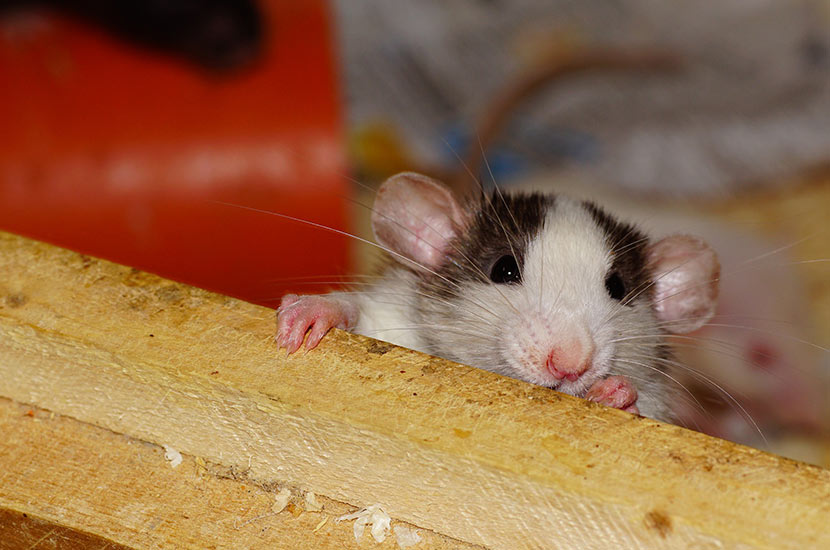Rodent Tumors Visible to Owners
Kristin Claricoates, DVM
Mammary tumors:
Mammary gland neoplasia (cancer) is the most common neoplasm of mice and rats, but is rare in gerbils and hamsters. Mammary tumors are typically large, firm, and usually only one tumor on the body. It also feels detached from the rest of the body tissues and underlying body tissue.
Most mammary tumors in rats and hamsters are benign, that is to say, these tumors do not spread to other tissues in the body. In rats, 80% are benign tumors and 20% are malignant. In mice and gerbils they are typically (~90% of the time) malignant, metastatic, invasive tumors, or very bad, progressive tumors. They are also much more difficult to remove completely. Mouse mammary tumors predispose the mouse to developing uterine adenocarcinoma.
Skin tumors:
There are many types of skin tumors that can occur in rodents. However, it is important to note that hamsters and gerbils have scent marking glands that are normal on the skin and are not tumors. If you are concerned about seeing an unusual skin mass, please bring your animal in for us to examine and treat.
Skin and subcutaneous tumors are uncommon in hamsters. Melanoma is the type of skin tumor that may be seen in hamsters.
The skin and subcutaneous layer in gerbils is the second most common location for tumors in gerbils. Adenomas and adenocarcinomas are the type of skin tumor most commonly seen in gerbils.
Skin neoplasms are uncommon in mice and rats. In mice and rats, squamous cell carcinomas are most common.
I think I see a growth on my pet. Now what?
It is important for you to come to the veterinary hospital as soon as possible. With some of these tumors, time is of the essence, and your pet has a much better prognosis (a forecast of the outcome of the disease) if it is handled sooner rather than waiting.
Treatment:
Treatment of any tumor is always to remove this tumor. Depending on if it is malignant or benign, we may take more tissue or less tissue surrounding the tumor (the malignancy can be assessed but not diagnosed by a fine needle aspirate). We recommend the removed mass be sent off to a laboratory and assessed to determine if it is benign or malignant. If you choose, chemotherapy may be used to help treat patients with tumors depending on if the tumor type.
Prognosis:
The prognosis depends on the type of tumor.
If the prognosis is guarded or poor, another alternative to surgery in these pets is medically managing any pain your pet may have and electing euthanasia when the mass becomes too large or spreads.
(Sources: Blackwell’s Five-Minute Veterinary Consult: Small Mammal, Second Edition. Barbara L. Oglesbee. © 2011 John Wiley & Sons, Inc. Published 2011 by
John Wiley & Sons, Inc
Ferrets, Rabbits, and Rodents: Clinical Medicine and Surgery, Third Edition.
Katherine E. Quesenberry and James W. Carpenter. © 2012 Saunders, an imprint of Elsevier Inc.)

